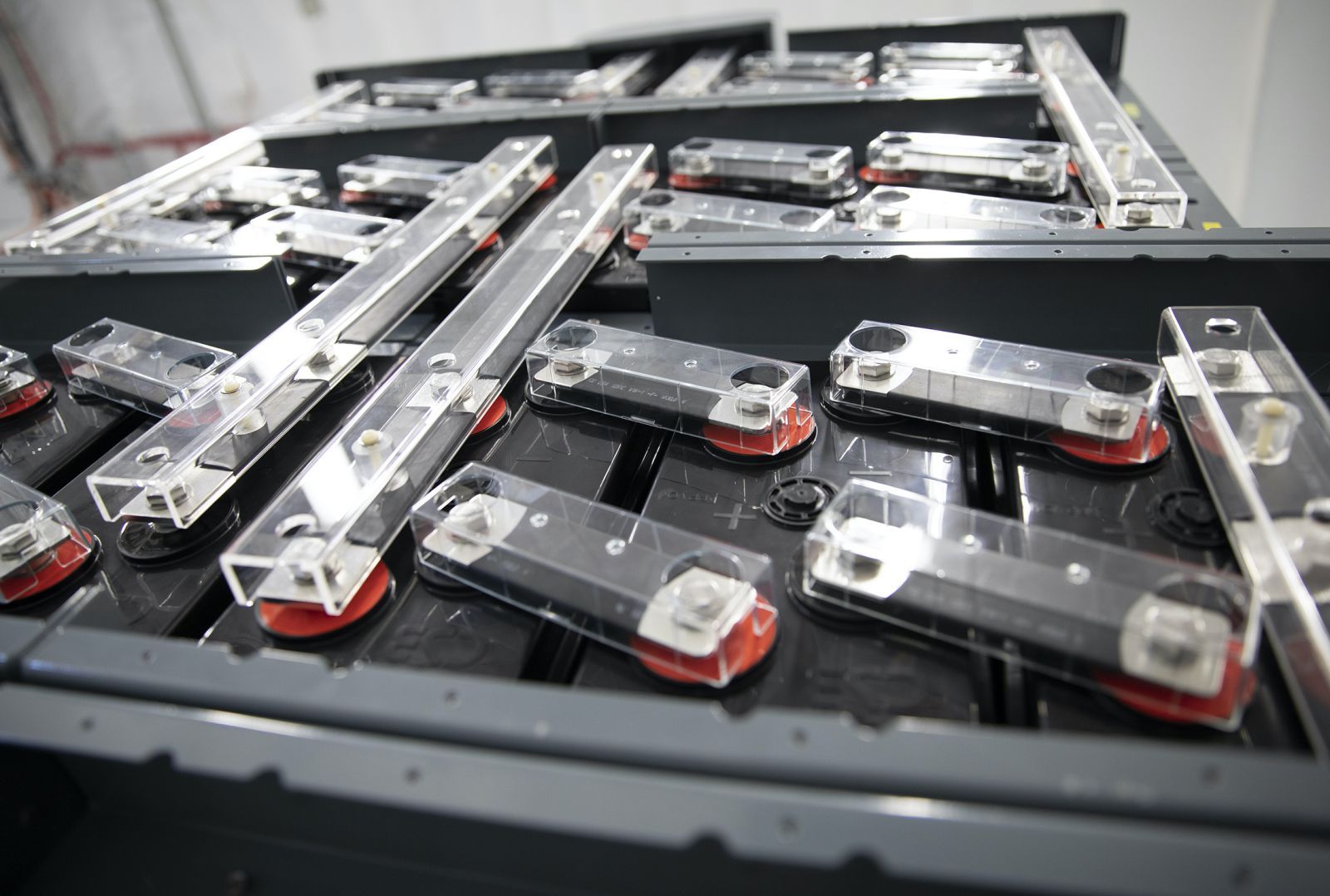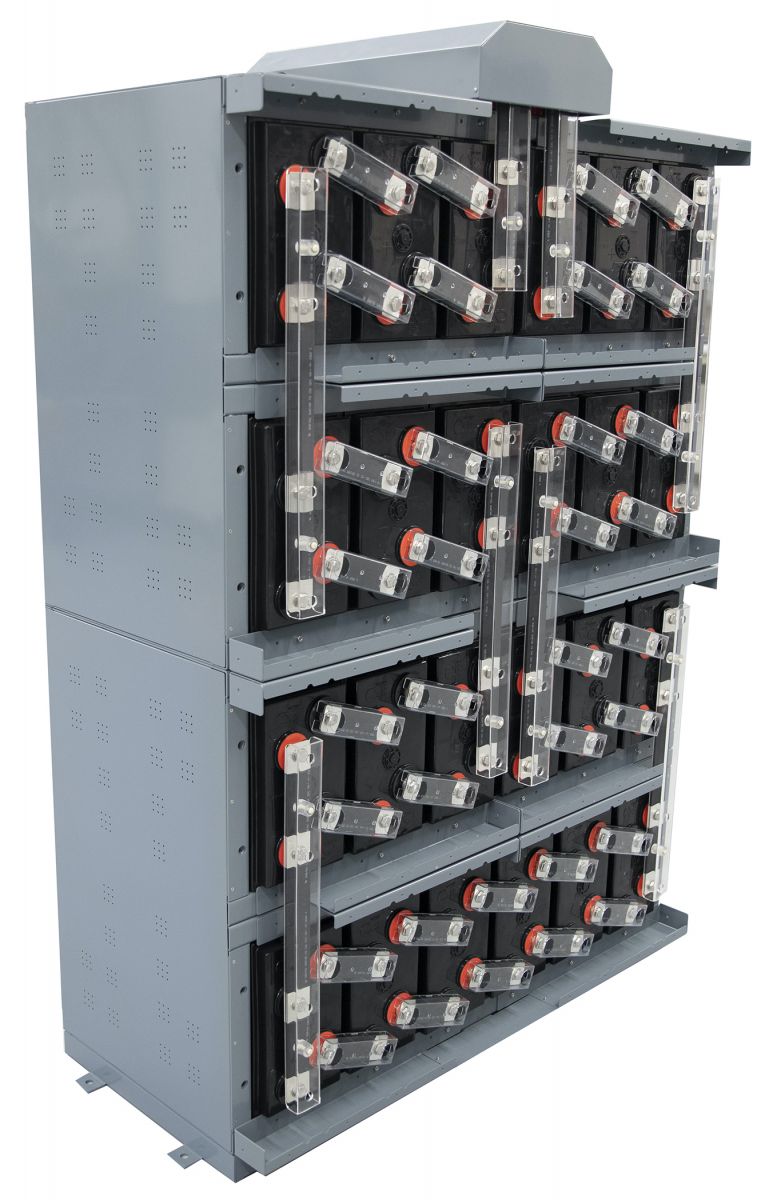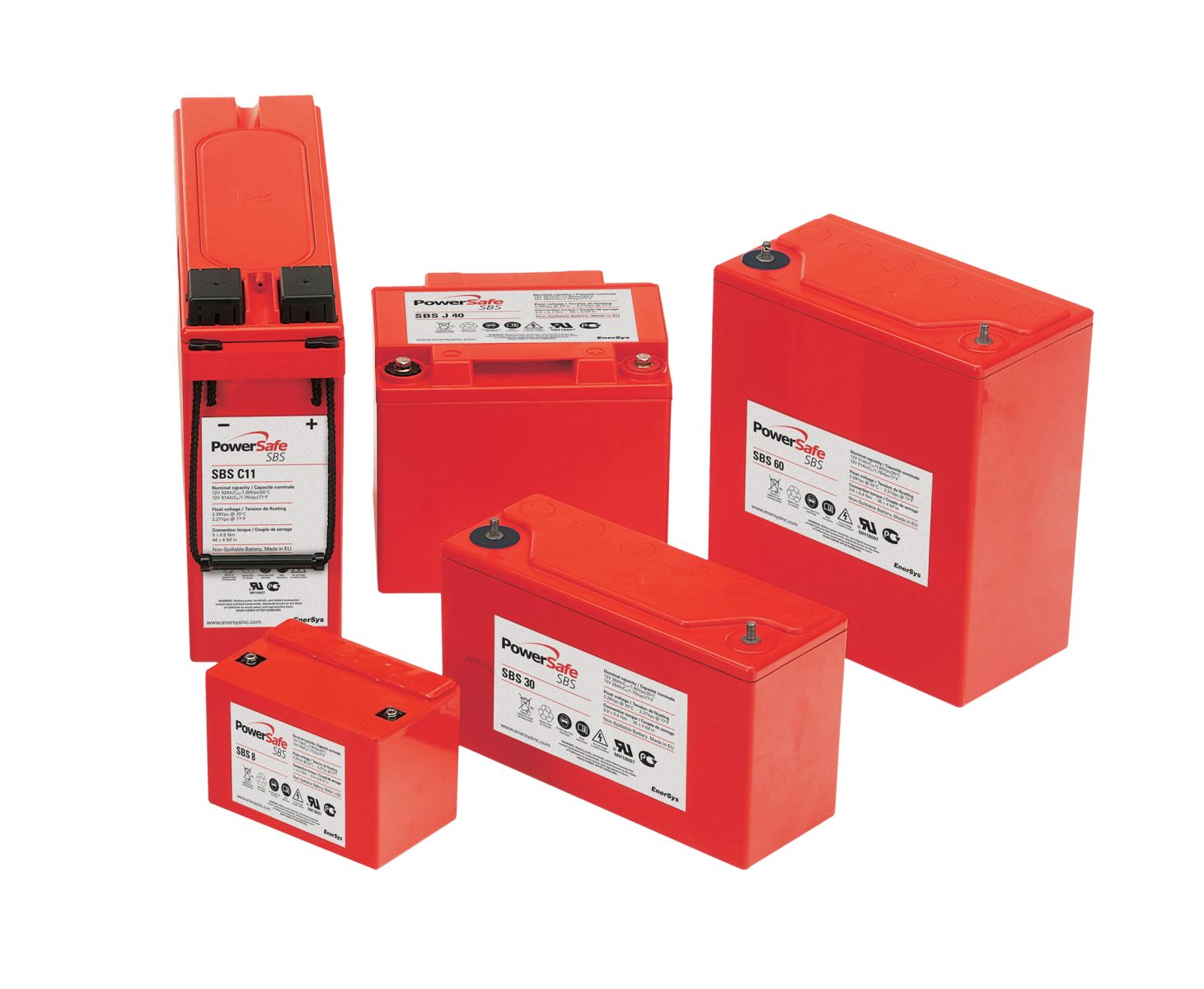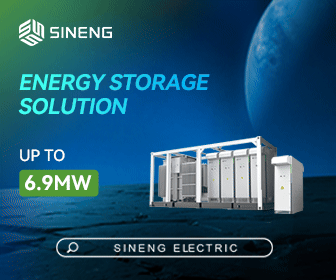How Thin Plate Pure Lead (TPPL) Batteries Boost Renewable Energy Storage
The growing reliance on renewable energy sources has prompted an exponential growth in the industry of energy storage. Solar-plus-storage systems, in particular, have seen increased demand. Some common reasons for using solar-plus-storage systems include Time-of-Use (TOU) to offset peak utility rates or rolling blackouts, and minimize potential high costs of grid energy. Other reasons include emergency backup power in the event of a grid outage from storms or earthquakes, as well as off-grid power that allows residences to reduce their dependency on the existing utility grid.

Energy storage is needed for the transition to a low-carbon, sustainable electrical grid. Batteries offer the advantages of relatively low initial costs and mobility. Battery storage is both well-suited for supporting the integration of wind and solar Photovoltaic (PV) power into the grid, and economical for short-term and small-capacity applications[1]. While hydroelectric-pumped storage accounts for the greatest share of large-scale energy storage in the United States, batteries account for the most growth in additional storage capacity since 2003[2]. Whether it is on a residential or utility scale, battery storage offers flexibility and versatility. It also benefits from being compact in size, easy to implement, economical, and readily available.
As of 2018, customers of the utility grid in the United States lost power for an average of 1.67 times per year, for a little less than 3 hours each time[3]. In addition to the frequency and duration of outages, the average American consumer uses 914 kWh of electricity per month, which breaks down to 1.27 kWh per hour. This means that most small-scale emergency backup needs for residential and light commercial applications (not using TOU to offset high utility costs) is 7-10 kWh of energy storage, to be used twice per year[4].
Lead Acid Batteries
 The relatively newer Lithium-ion (Li-ion) storage technology favors extreme cycling environments, such as residential and light commercial TOU, as well as specific utility operations[5]. Lead acid batteries, on the other hand, have been successfully used for decades as backup for industrial applications, including telecommunications and data networks[6]. Lead acid is one of the oldest types of rechargeable battery technology, with a long history of dependability and the advantage of relatively low manufacturing costs.
The relatively newer Lithium-ion (Li-ion) storage technology favors extreme cycling environments, such as residential and light commercial TOU, as well as specific utility operations[5]. Lead acid batteries, on the other hand, have been successfully used for decades as backup for industrial applications, including telecommunications and data networks[6]. Lead acid is one of the oldest types of rechargeable battery technology, with a long history of dependability and the advantage of relatively low manufacturing costs.
Valued for their sustainability, lead acid batteries have a 99 percent recycle rate. Lead components, plastic containers and acid electrolytes are easily separated and recycled with little energy, with lead emissions easily contained. Costs that can be recovered from recycling keep the process efficient and economical, as opposed to other chemistries, such as Li-ion, which is plagued by higher prices and lower recycling rates[7].
Lead acid batteries typically offer efficient short-time reserves that are useful for local, residential, and small commercial systems[8]. They offer the best cost/performance ratio in terms of capital cost per kilowatt-hour and kilowatt, with a tradeoff of shorter lifetimes and only average efficiency[9]. Further savings in lifetime costs of lead acid batteries are possible with best practices in design, manufacturing, and operation, which can help avoid early failure and curtailment of battery service life[10].
Thin Plate Pure Lead (TPPL) Technology
Among the recent improvements to lead acid batteries has been the use of Thin Plate Pure Lead (TPPL) technology. TPPL batteries are manufactured in a proprietary, continuous, and highly-controlled plate fabrication process that ensures maximum consistency in the composition of battery components, especially the plates. Pure acid and lead consume energy more efficiently. They also improve conductivity by reducing the rate of plate corrosion, and avoid the calcification that is common in alloyed lead acid batteries. By using a TPPL battery in a renewable energy emergency backup application, customers can maintain their quality of life, and that of the environment, with this effective and economical solution.
TPPL technology delivers the following improvements in performance to lead acid batteries:
- With greater energy density, smaller and lighter TPPL batteries can achieve the same run times as larger, conventional lead acid batteries.
- Following a full discharge, TPPL batteries typically achieve 100 percent State of Charge (SOC) in 50 percent less time, compared with conventional lead acid batteries.
- By reducing plate corrosion and growth, TPPL batteries offer a longer shelf life (18 months) than lead calcium batteries (typically 6 months) at 77 º F (25 º C).
- High-purity materials enable a reduction of gas generation within the cell, which can contribute to expanding the range of operating temperatures beyond the standard of 77 º F (25 º C) to as high as 95 º F (35 º C).
- TPPL technology enables batteries to have as much as 25 percent longer service life (seven years or longer) than the typical three-year service life of lead-calcium batteries at 77 º F (25 º C).
- TPPL batteries use thinner internal plates that allow for added surface area and higher power density with low internal resistance.
- TPPL batteries offer quicker harvesting of solar power, better power delivery, and more flexible system sizing than conventional lead acid batteries.
 Thin Plate Pure Lead Carbon (TPPL-C) Batteries
Thin Plate Pure Lead Carbon (TPPL-C) Batteries
Renewable energy sources, especially solar PV, typically cause batteries to discharge without the opportunity to fully recharge before being used again. This Partial State of Charge (PSOC) operation can cause irreversible sulfation to the negative plates, which compromises battery life[11]. One solution to this problem is the addition of carbon to the negative active material in TPPL batteries, thereby creating Thin Plate Pure Lead Carbon (TPPL-C) batteries. The carbon additive dramatically reduces the sulfation rate, and provides up to five times faster recharge rates, which allow a TPPL battery to survive longer in a heavy cycling or PSOC application. This puts the performance of TPPL-C batteries closer to that of more advanced energy storage like Li-ion.
The variety of available battery chemistries offers new possibilities in how the industry can meet the growing storage demands of renewable energy. Improvements to this proven technology have enabled the lead acid battery, a mature technology, to maintain its place in a rapidly changing environment.
 Eric Hill is an Energy Storage & Systems Manager at Alpha Technologies Services, an EnerSys company. EnerSys manufactures and distributes energy systems solutions and motive power batteries, specialty batteries, battery chargers, power equipment, battery accessories, and outdoor equipment enclosure solutions to customers worldwide. Eric Hill has 12 years of experience in energy storage product management and operations, working with several applications that include renewable energy, broadband, telecom, industrial and datacenter UPS. He is experienced with multiple chemistries: lead acid, Lithium-ion, NiCd, nickel-zinc, flow, aqueous, bi-polar and sodium-ion.
Eric Hill is an Energy Storage & Systems Manager at Alpha Technologies Services, an EnerSys company. EnerSys manufactures and distributes energy systems solutions and motive power batteries, specialty batteries, battery chargers, power equipment, battery accessories, and outdoor equipment enclosure solutions to customers worldwide. Eric Hill has 12 years of experience in energy storage product management and operations, working with several applications that include renewable energy, broadband, telecom, industrial and datacenter UPS. He is experienced with multiple chemistries: lead acid, Lithium-ion, NiCd, nickel-zinc, flow, aqueous, bi-polar and sodium-ion.
EnerSys | www.enersys.com
[1] Bakos, Panagiotis, "Life Cycle Cost Analysis (LCCA) for utility-scale Energy Storage systems," University of Illinois at Chicago, 2016, p. 55
https://journals.uic.edu/ojs/index.php/JUR/article/download/7556/6048
[2] U.S. Energy Information Administration (EIA) Independent Statistics and Analysis. (n.d.)., p.3, Retrieved July 20, 2020, from https://www.eia.gov/electricity/data/eia861/
[3] Ibid., p.1
[4] Frequently Asked Questions (FAQs) - U.S. Energy Information Administration (EIA). (n.d.), p.1 Retrieved July 20, 2020, from https://www.eia.gov/tools/faqs/faq.php?id=97
[5] Hart, David M., William B. Bonvillian and Nathaniel Austin, "Energy Storage for the Grid: Policy Options for Sustaining Innovation," MIT Energy Initiative, April 2018, p. 6
https://energy.mit.edu/wp-content/uploads/2018/04/Energy-Storage-for-the-Grid.pdf
[6] May, Geoffrey J., Alistair Davidson and Boris Monahov, "Lead batteries for utility energy storage: A review," Journal of Energy Storage, Elsevier, November 2017, p. 146
https://www.sciencedirect.com/science/article/pii/S2352152X17304437
[7] Ibid., p. 147
[8] Ibid., p. 146
[9] Baes, Kurt, et al., "Battery Storage: Still Too Early?" Arthur D. Little, January 2017, p. 15,
http://www.adlittle.com/sites/default/files/viewpoints/ADL_Battery%20Storage.pdf
[10] Op. cit., p. 151
[11] Ibid., p. 147
Author: Eric Hill
Volume: 2020 November/December









